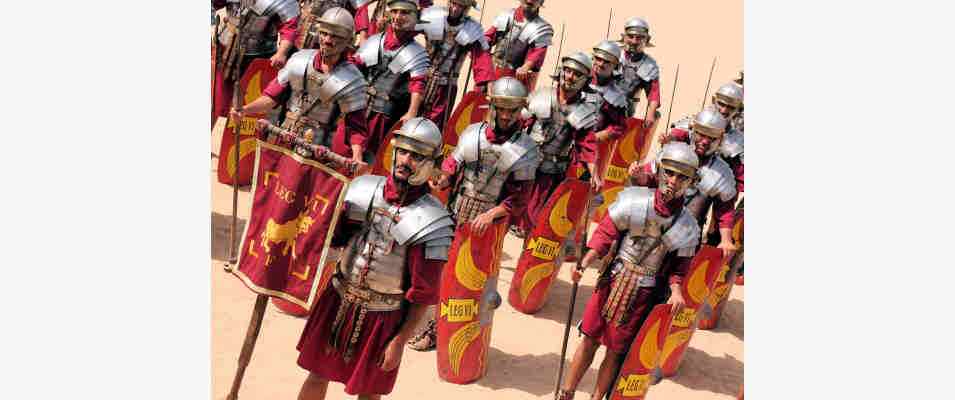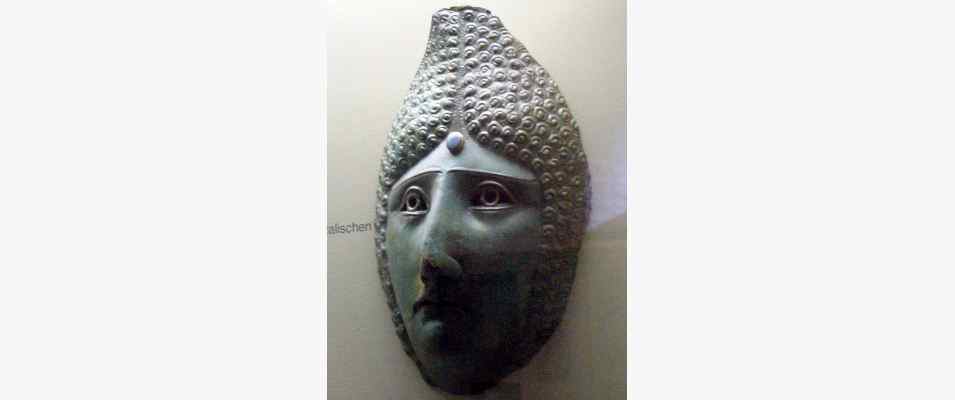




The Romans
in Kelheim in the national park Altmuehl valley
In the southern districts of Cermany, traces of the Romans can be found everywhere. Vestiges of the Romans and of Roman culture abound in the Natural Park of Altmuehl Valley ![]() . There are a lot of excavations and reconstructlons.
. There are a lot of excavations and reconstructlons.
The Roman "limes", which people in southern Germany used to call "devil´s wall", runs across the national park. In the hinterland of the limes a number of cities with temples and thermal spas, castels and estates of Roman nobles are proof of the high standard of Roman civilization.
From 15 B. C. to A. D. 16, Drusus and Tiberlus, stepchildren of Emperor Augustus, conquered the land north of the Alps. Augsburg, in Latin "Augusta Vindelicorum", became the brilliant capital of the province of Raetia, the northern boundary of which was the Danube.
Later the Romans advanced across the river, and the emperors Trajan and Hadrian (A. D. 117-138) ordered the limes to be built.
When the limes was finished lt conslsted of a stone wall and guard turrets in regular distances. The guards could call help hy means of fire-signals when danger was impending. Task forces crushed any infringements of the Germanic hordes. When there were serious attacks, reinforcernents came from the castels. The gates were open for trading.
A highly developped network of roads which was in use until the beginning of modern times was good for transporting people and goods and news. Under Roman rule the land around the river Altmuehl was thriving.
The Limes Road in Germany 
This raod leads from Aalen via Gunzenhausen ![]() , Weissenburg, Eichstaett
, Weissenburg, Eichstaett ![]() to Eining and Ratisbon. The traveller can find numerous excavations and vestiges of the Romans.
to Eining and Ratisbon. The traveller can find numerous excavations and vestiges of the Romans.
Near Kelheim there are several places where visitors can get a lot of Information about Roman culture. Experts suggest touring the sights as follows:
| Kelheim: | The archaeological museum |
| Riedenburg | |
| Altmannstein |
There are traces of guard turrets in Altmannstein. |
| Koesching | The Roman castel Germanicum built in A. D. 80 is now under the village of Koesching. The foundation walls of the parish church are probably Roman walls. |
| Pfoerring | Here there was a castel of the Roman cavalry which extended over ten acres, Two Roman memorial stones are put up near the church. |
| Neustadt/Donau | |
| Goegging spa |
The healing effect of certain hot springs with suiphurons water was well-known to the Romans. Emperor Trajan ordered bis architects to build a large thermal bath. Traces of the bath are to be seen in the crypt of St.Andrew's. |
| Eining | Castel Abusina |
| Hienheim | The Hadrian´s column marked |
back to the Homepage of the town Kelheim ![]()
Zuletzt aktualisiert am 10.02.2017